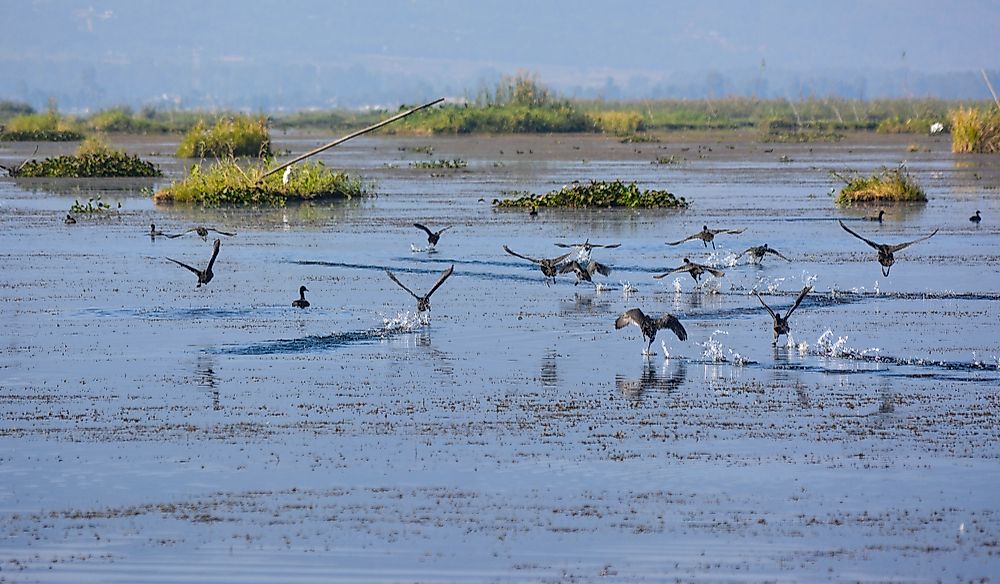What Is A Phumdi?

A phumdi is a floating island with a unique composition that is found only in one place in the world, Loktak Lake in the northeast state of Manipur, India. A large part of this lake has phumdis floating on the water surface. Loktak Lake is the largest lake in northeast India and is about the size of the island country of Madagascar.
Formation and Composition of Phumdis
Phumdis are formed of soil, organic debris, and matted vegetation that are in various stages of decomposition. The thickness of these floating islands varies from a few centimeters to around two meters. 20% of this thickness surfaces above water while the rest remains submerged. During the dry season, the water level in the lake falls significantly so that the roots of the phumdi vegetation touches the lake bottom and seeps nutrients from it. During the rains, the phumdis get disconnected from the lake floor as water levels rise in the lake. The phumdis then float on the water. The cycle continues and allows the phumdis to survive.
Phumdis Support Great Biodiversity
At the southern end of Loktak Lake, many phumdis have consolidated over centuries to produce a vast marshy grassland of around 40 square kilometers. The area has been protected by the government as Keibul Lamjao National Park that was established in 1955. It is the world’s only floating national park.
Phumdis support many species of flora and fauna. A study of phumdi vegetation found that the habitat supported 83 species of plants with seasonal variations in plant diversity. Mammals like the sangai, hog deer, common otter, jungle cat, bamboo rat, fox, Indian civets, musk shrew, flying fox, and others live in the phumdi habitat in Keibul Lamjao National Park. A large number of reptiles including tortoises, common lizards, and poisonous snakes like krait, viper, cobra, and python also inhabit the park. Both migratory and resident bird species also occur in the park. Some of the most notable of these species are the Burmese sarus crane, spotbill duck, black kite, northern hill myna, and others. The sangai, a subspecies of Eld’s deer, is endemic to the national park and is its flagship species. It is an endangered animal.
Importance of Phumdis to Humans
Fish forms an important part of the Manipuri diet and fishing is a major economic activity in Loktak Lake. Phumdis on the lake are thus often used by the locals to built small fishing huts or sheds. Wood, bamboo, ropes, and rocks are used to build these structures. There are also permanent settlements on these phumdis. An estimated 4,000 people live on these islands. Aquaculture is also practiced by many of the phumdi dwellers. Villagers have also built artificial phumdis called Athapums on the lake.
Threats to the Phumdi Habitat of Loktak Lake
The construction of the Ithai Barrage on the Manipur River downstream of Loktak Lake in 1983 led to an environmental disaster. It flooded large areas of Loktak Lake and caused great damage to Keibul Lamjao National Park’s habitat. The phumdis that derived nutrients from the lake bed during the dry season were now floating at all times. Thus, they were in a state of disintegration and were separating from the single piece that formed the national park. The phumdis elsewhere were also disintegrating. However, luckily, the forest department of Manipur devised a way of holding down the phumdis by pinning them down on the ground with the help of wooden poles. Today, although the phumdis of Loktak Lake have been restored to some extent, the future possibility of construction of dams, pollution, and climate change continue to threaten the phumdis even today.











